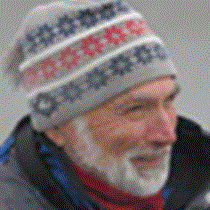Isla Santa Catalina
A gentle breeze passed over our bow as golden morning light glinted off the tops of small waves. Just after our wake-up call a blue whale surfaced. What a great start for our first morning aboard the National Geographic Sea Bird! After a series of blows it arched, and its tail stock rose from the surface and up came the flukes. A cheer erupted from the people on the bow.
Only about 20 percent of blue whales show their tails and the massive, muscles that power this creature that weighs well over 100 tons. It is lucky to spot this species in January. More blues arrive here in February and March as they swim south from the waters off central California on their way to an area of upwelling and rich zooplankton near Central America called the Costa Rica Dome. The Gulf of California also offers food for them, especially within the Loreto Bay National Marine Park, where we spent the morning. This whale was below the surface for 20 minutes or more at a time which usually is related to dives as deep as 900 feet. Our last view of this stunning creature displayed the mottled grey color that looks almost blue and the tiny one-foot-tall dorsal fin that characterizes this largest of marine mammals.
The ship’s gentle roll continued as we cruised on toward Isla Santa Catalina. Stewart Aitchison, one of the five members of our photo team, gave an introduction to photography. We anchored and had our lunch near a granite rock that looks like an elephant.
Snorkelers found a great array of fish, including the easy-to-identify king angels, long and sleek reef cornetfish and the olive-drab and blue giant hawkfish. Although chilly, the water was crystal clear.
Walks with an emphasis on photography ambled into a superb forest of cardon cacti. Rotund giant barrel cacti are endemic here. This island always appears to have more beautiful and lush desert vegetation than anywhere we go with the National Geographic Sea Bird, and is a perfect place for photographers to create great images.
The longest hike meandered along a sandy wash that climbed through a narrowing canyon to reach a ridge line. It is quite satisfying to look out over to the sea on the other side. Some went higher for a better view of the peninsula. On our Zodiac ride back to the ship about 20 bottlenose dolphins rode along with our boat. These delightful creatures seemed to enjoy the Zodiacs as much as we enjoyed them.
After a satisfying meal we listened to one of our naturalists, Alberto Montaudon, present a program entitled Mexico Lindo. It filled us in on local culture, food, life and this country’s diversity and beauty.




